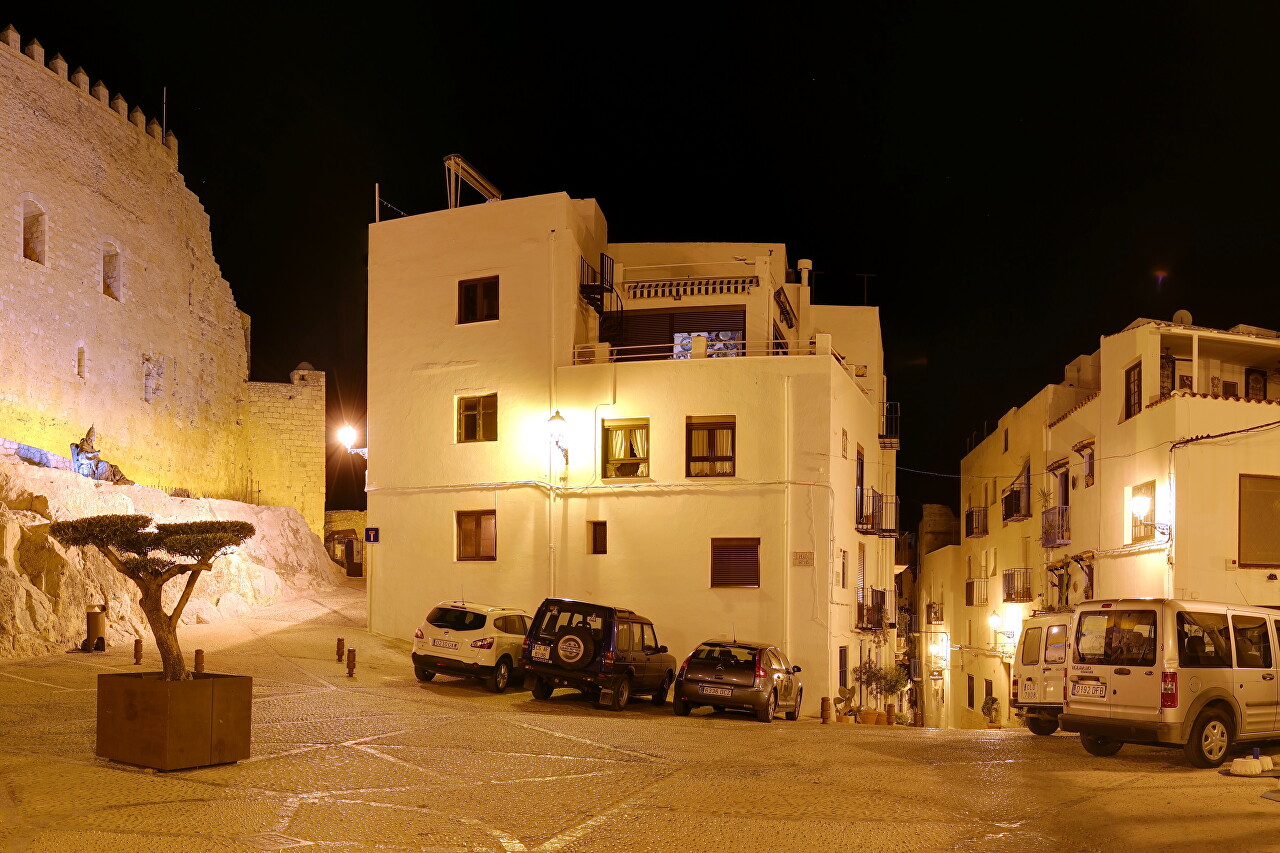Night Walk in Peñíscola
At six-thirty in the evening, it was completely dark, and the Christmas market was completely empty, although all the retail outlets were brightly lit. I finished my evening walk and went to the hotel to get a tripod.
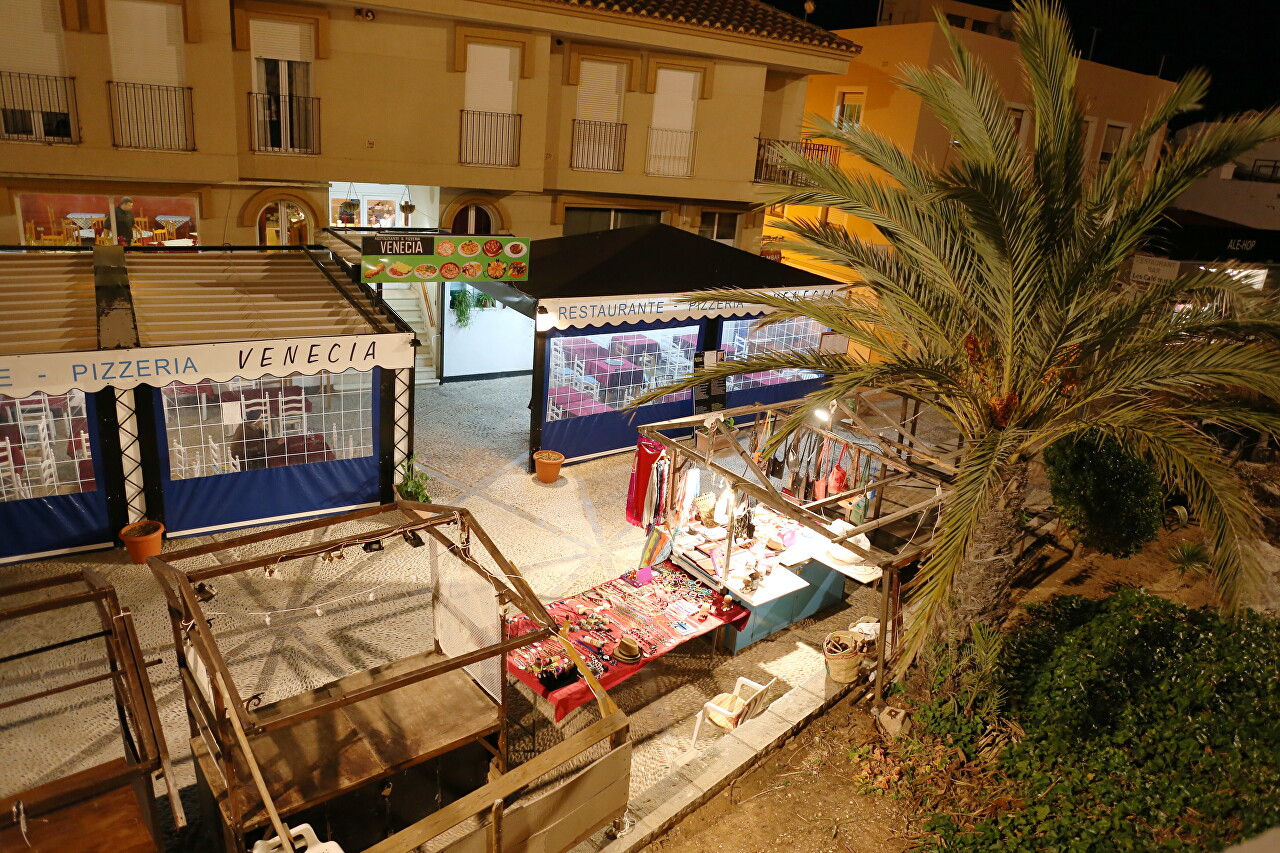
I started my night photo shoot on the Northern Beach, or rather on the sandy bridge connecting the Peniscola fortress with the shore. On this side, the fortress is protected by the Bateria de los Foses and Baluarte de Santiago batteries, above which you can see the trees of the Artillery Park. The highest wall with a battlemented parapet is the Calvario Bastion (Baluarte de Calvario). Also clearly visible are the castle built by the Templars in the 13th century and two churches of the church: Our Lady of Hermitana and St. Mary. The second one is almost impossible to see from the city due to the dense development. My room in Panison Casa Juanita faced a blank wall, and it wasn't until I studied the map that I realized it was the wall of a church.
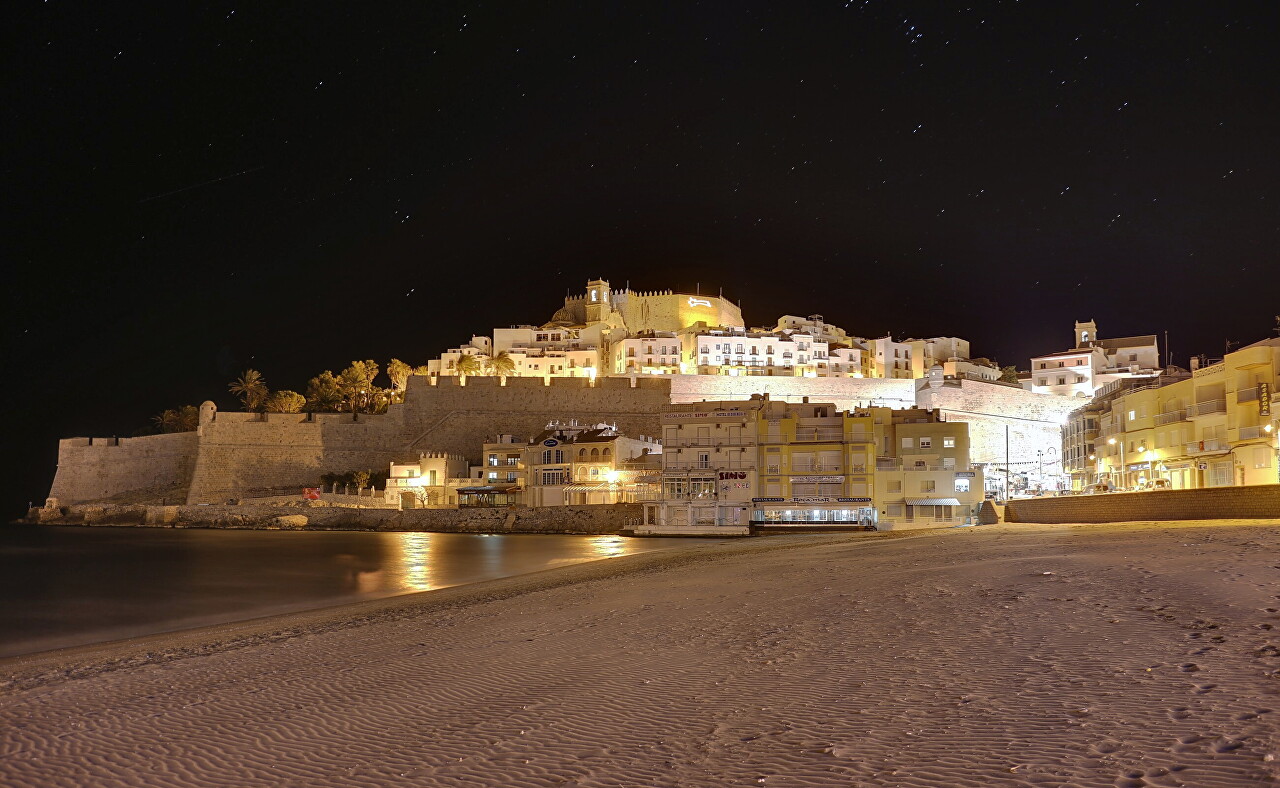
Then I went to the port to capture the southern walls of the fortress. The Bateria de Santa Maria Bastion guards the main city gate of the same name (Porta de Santa Maria).
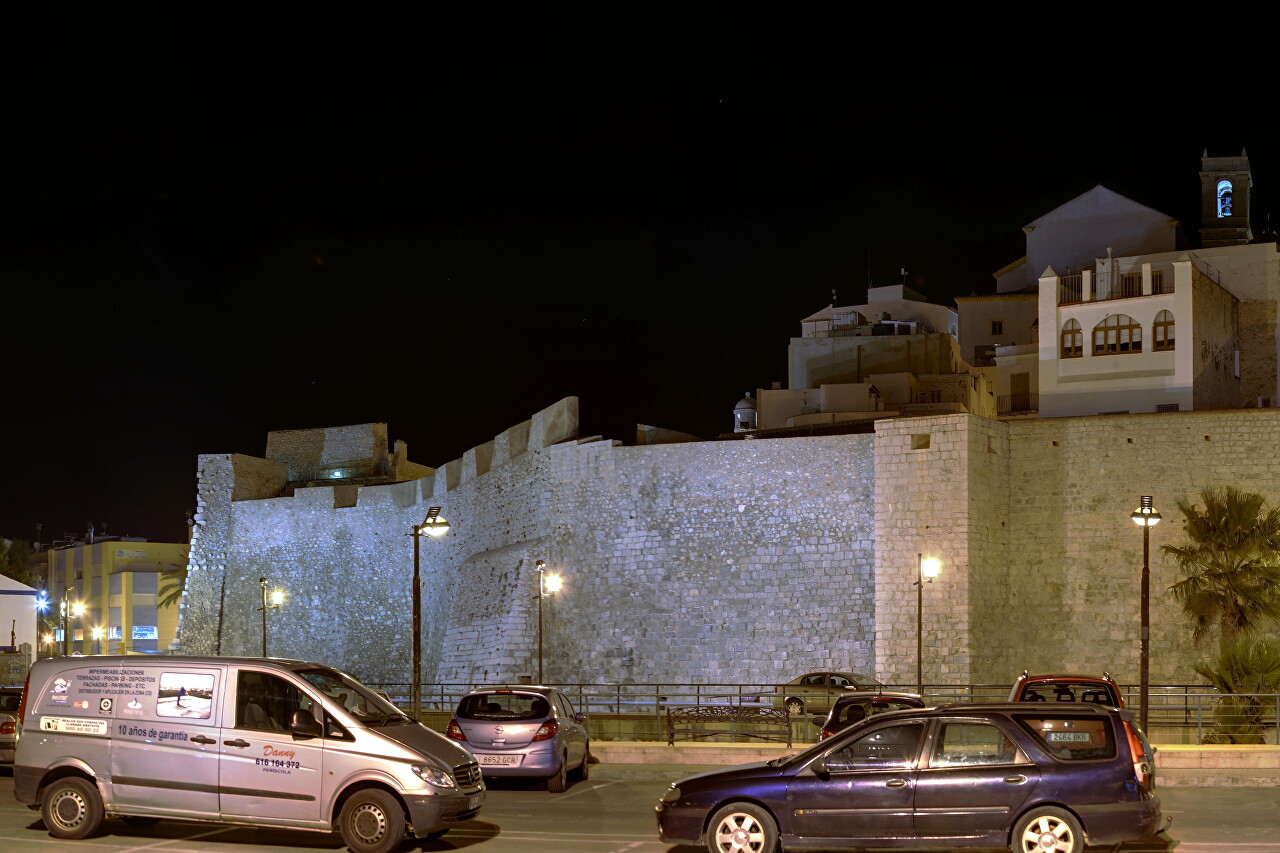
Then there is the bastion of Santa Ana (Bateria de Santa Ana), named after an ancient chapel. Here is the Porta de Sant Pere (St. Peter's Gate) leading to the port.
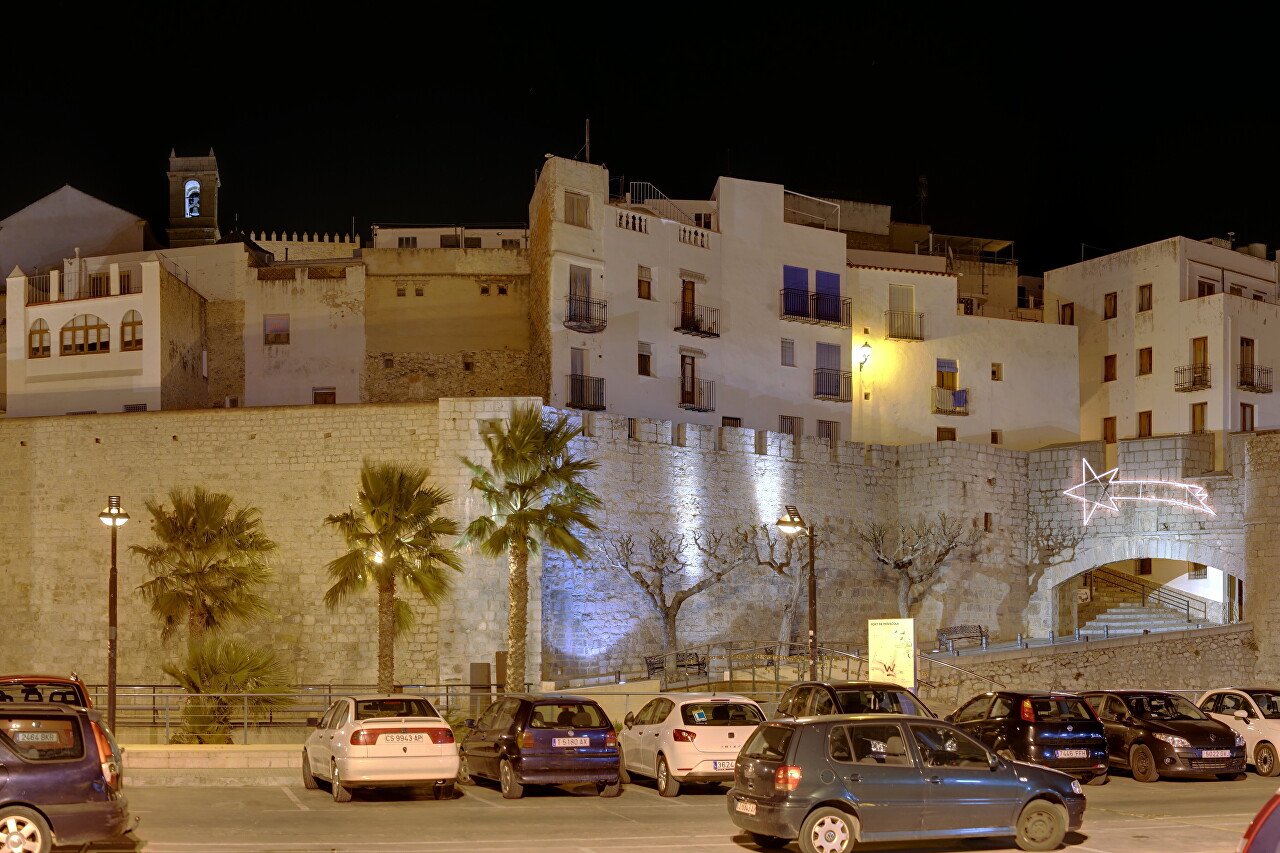
The bastion that protected the port was named after a cave located in a sheer cliff at the southern tip of the island (Bateria de Bufador). The cave comes to the surface behind the fortress wall, from the hole you can hear the characteristic sounds of "Buff-buff" created by the impact of waves.
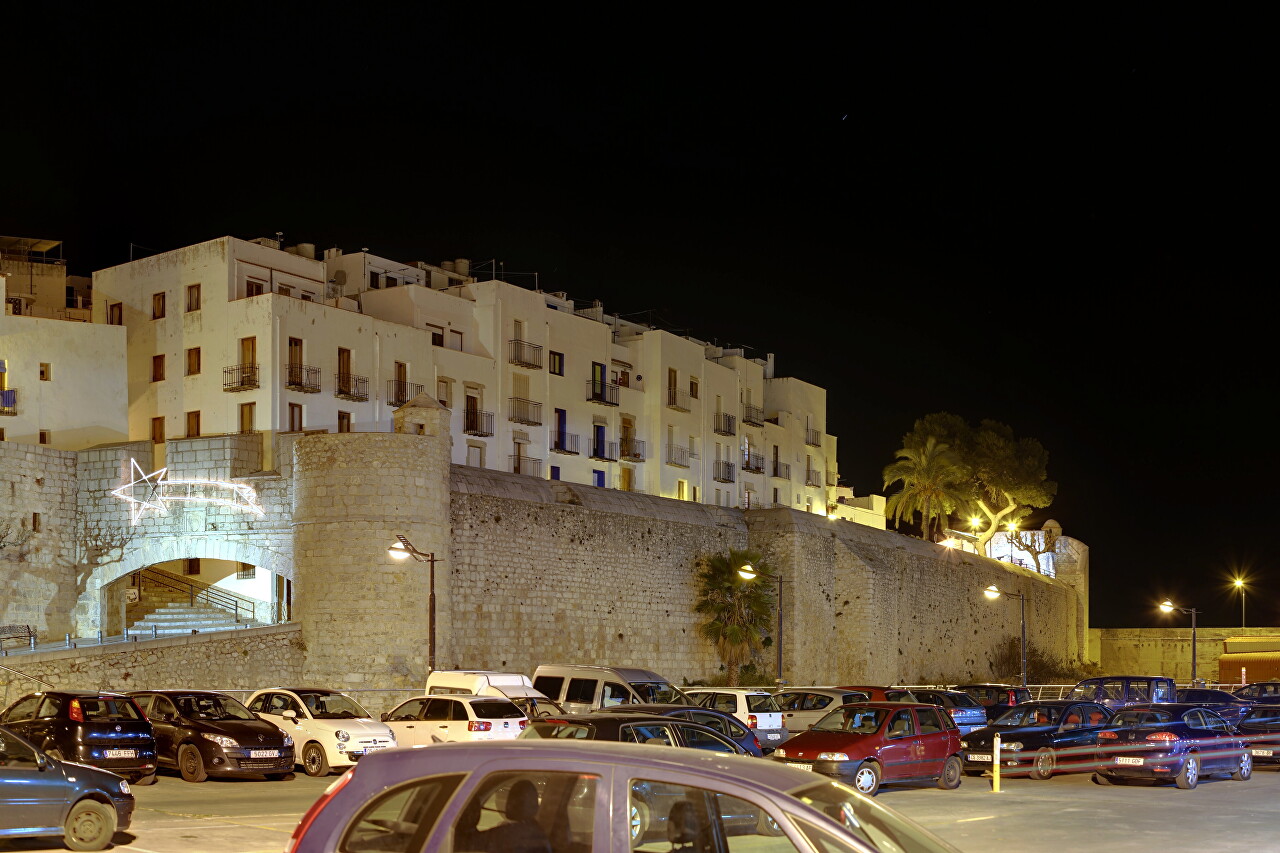
After going around the outside of the fortress, I went up through the St. Peter's Gate into the Old Town. The white streets are absolutely deserted at night and look fantastic.
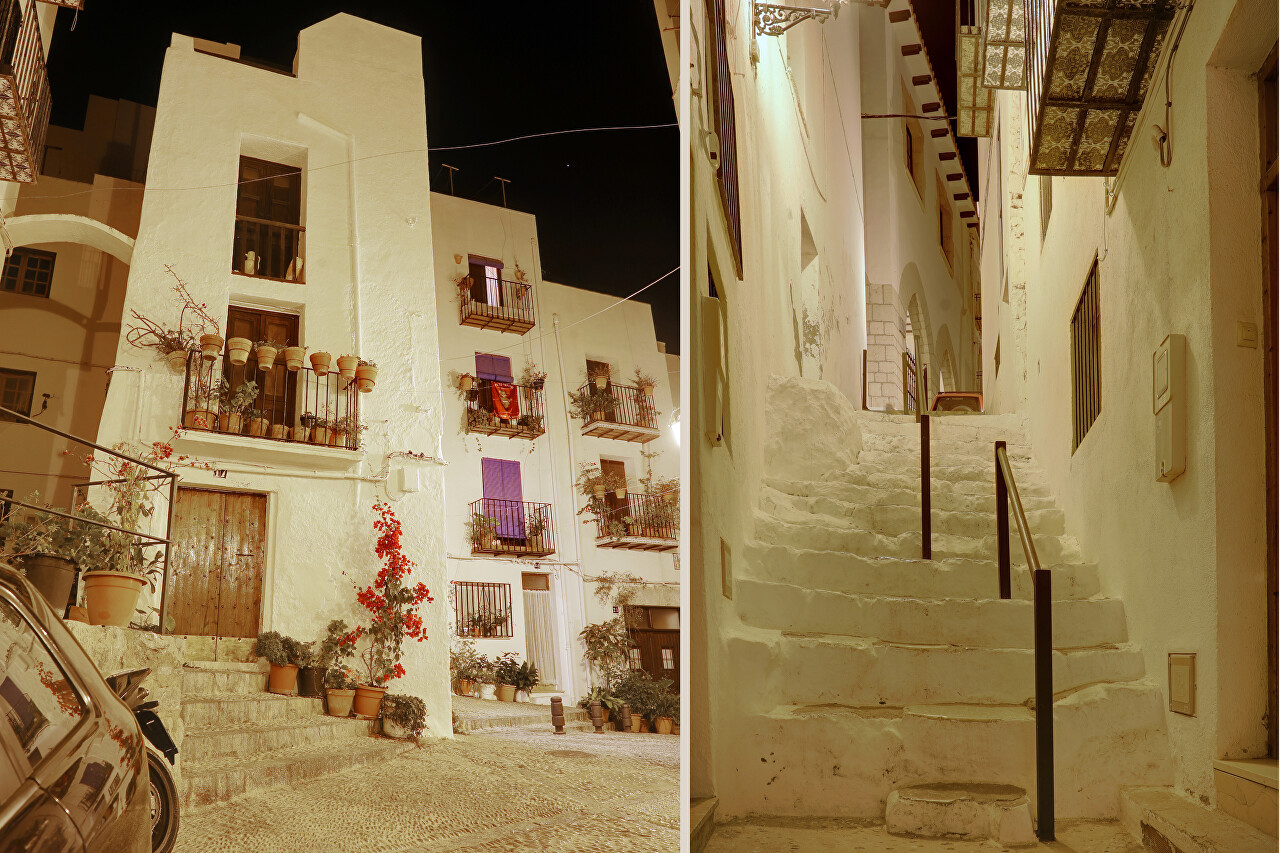
I finished my nighttime walk at the top of the city, where the castle is located, decorated for Christmas with a flying star of Bethlehem.
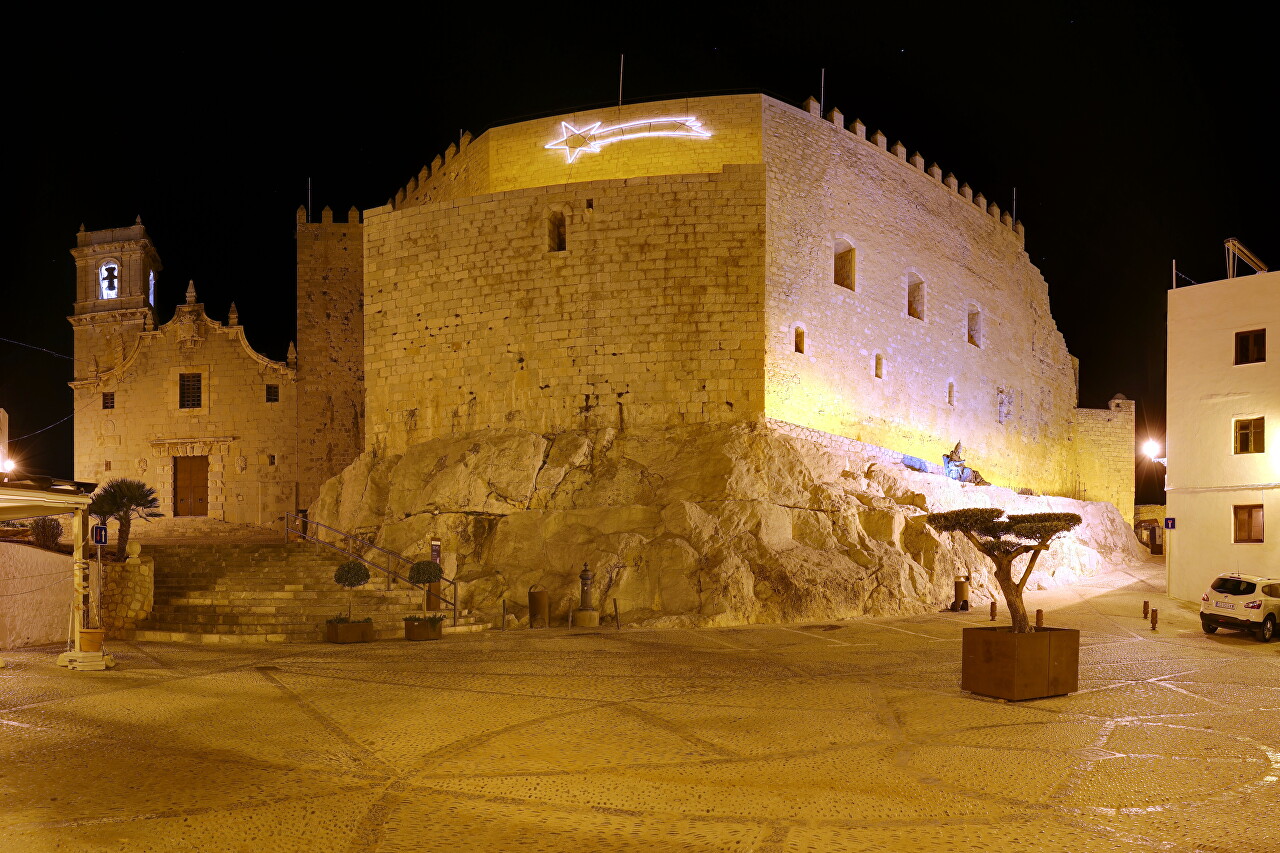
To the left of the castle is the Church of Our Lady of Hermitana.
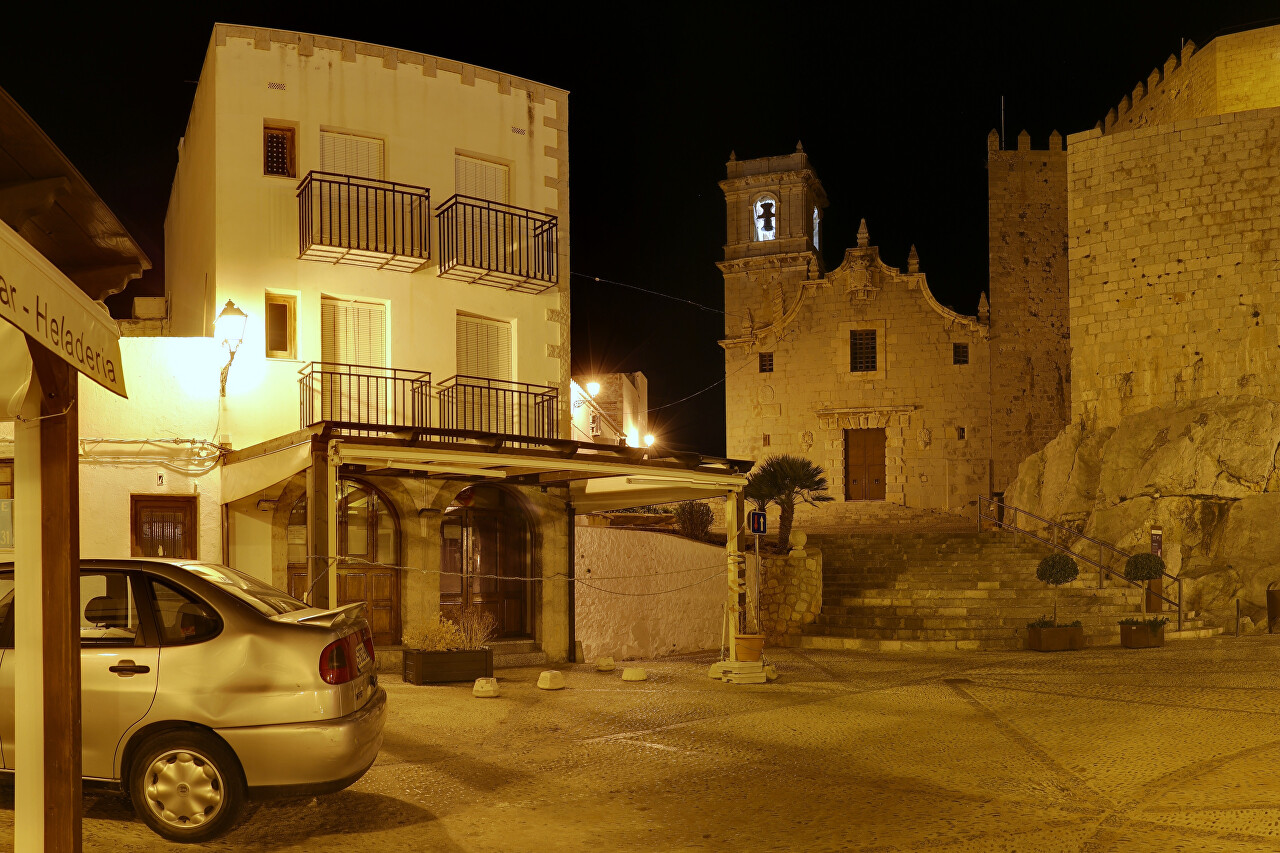
In the Plaza Armas, near the castle wall, sits the disgraced Benedict XIII, known as the Antipope and Pope Luna, who lived in the castle after the exile.
